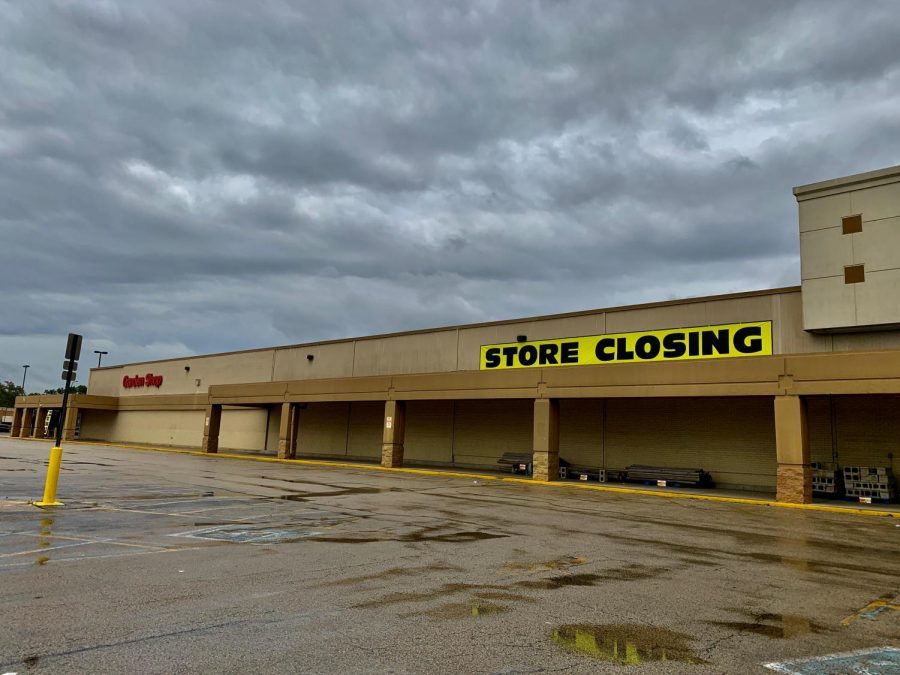Retail stores recede as online shopping flourishes
The bones of a local retail store that has closed recently
It’s almost like clockwork, with how frequently it happens. For a few days, all the headlines speak of retail’s inevitable doom as another big brand finds themselves closing stores across the nation. Toys R’ Us, Sports Authority, and Forever 21 are just a few of the big brands to shut their doors and leave the markets in recent memory, and more are sure to follow. And while many news outlets blame the boom in online shopping, it’s apparent that it’s the store’s own policies and inability to adapt to change that are often to blame.
One of the most important things you have to consider when it comes to store closing is the bad decisions they make beforehand. Toys R’ Us, for example, had billions of dollars in debt that needed to be paid off. This led to putting less money towards customer care and the maintenance of the store, which caused many parents and toy collectors to look at other options like local, but more expensive small toy stores that offered more in terms of customer service and satisfaction.
“We know your family and what the kids in the neighborhood are into right now,” said Ann Kienzle in an article from CNN. Kienzle is the owner of Play, a toy store in Chicago. “We also have events three days a week, things like storytime and music jam. We want to make this an experience, and not an errand.”
This is something that Toys R’ Us often fell short on, unfortunately. Combine this less-than-stellar shopping experience with the monumental amounts of debt they accrued, and it should have been no surprise that they were closing.
Toys R’ Us’s story is certainly not unique, and it’s true that changing tastes in how we buy have affected retail in ways that they can’t fix themselves without substantial reforms to how they run their business as a whole.
For example, the fast-fashion practices that have ruled the clothing industry have begun to fall out of favor in the public eye as people start adopting more sustainable and ethical buying habits. “Forever 21 and H&M are some big fast-fashion retailers, but I know Forever 21 is going bankrupt right now and H&M is having some trouble financially as well, and I think that’s pretty good and might change how retailers view fast fashion and how it’ll affect their long-term success as a business,” said Ella Rios, a sophomore at RB.
“I used to buy a lot of fast fashion because I wasn’t really aware, but now I’ve been trying to buy more from thrift stores and local stores because they often provide decent clothes at a cheaper price. Thrift stores and smaller boutique-y stores usually source their clothing from places that pay their workers a living wage too, so it’s really nice to have that as an option as a customer,” said Rios.
The online shopping boom has also played a role in the closing of brick-and-mortar stores, but it isn’t so much the fault of online giants like Amazon and Aliexpress as it is the fault of stores not building their own online presence to keep up with the current trends. “I never really shop online when it comes to retail stores because I find it really difficult to find what I’m looking for and the sizing charts that they offer can be really complicated and hard to use, especially when you compare their websites to other online-based stores,” said Harrison Covarrubias, a sophomore at RB.
“I honestly can’t even remember the last time I bought anything at a place like sears or something. I think of it as a place where my parents and grandparents shop,” said Covarrubias.
Ultimately, a lot of stores that are facing financial trouble because of their inability to adapt and due to overexpansion, and not because people have begun to shop online more often. There are plenty of new and existing businesses that have done just fine because they made the changes necessary to thrive as the newest generations grow up and start making purchases independently of their parents. Retail will continue to grow as an industry over the next few years, and while online shopping is becoming a major part of the average American life, it’s never going to replace retail completely.

Quinn Palermo; hitman (woman?), volunteer shoehorn maker, and horse-hair bracelet weaver for DIY bohemian weddings. Part-time freshman at RB. If you...










